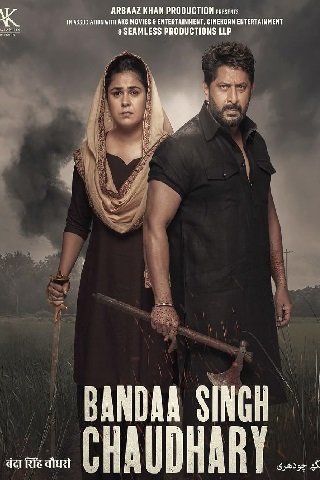Bandaa Singh Chaudhary Movie Review | Unity in Turmoil: The Rise of Banda Singh Chaudhary
Summary:
The film explores the impact of terrorism in Punjab during the 1970s and 1980s, focusing on Banda Singh Chaudhary, a farmer from Bihar. His strong wife, Lalli, teaches martial arts, highlighting empowerment in a violent society.
When militants threaten their family, Banda becomes a leader, uniting the villagers against the militants. This showcases the strength of community and the importance of solidarity in overcoming fear and division. The film resonates with current discussions on identity politics and emphasizes that unity is crucial for peace in troubled times.

The film you’re referring to presents a poignant narrative about the importance of coexistence and the consequences of division in society. Set against the backdrop of a tumultuous period in Indian history, particularly following the 1971 War, it delves into the impact of terrorism on the state of Punjab during the 1970s and 1980s. Through the lens of Banda Singh Chaudhary, the film explores themes of identity, justice, and the human spirit’s resilience in the face of adversity.
Introduction to Banda Singh Chaudhary
Banda Singh Chaudhary, portrayed by Arshad Warsi, is a farmer from Bihar who has settled in a small village in Punjab, showcasing the diverse tapestry of Indian society. His character embodies the essence of simplicity and hard work, living a peaceful life with his wife, Lalli, who is depicted as a strong and determined woman. Lalli’s role as a martial arts instructor for children not only highlights her bravery but also symbolizes empowerment and the importance of self-defense in a society threatened by violence.
The narrative takes a dark turn when militants force Banda and his family to confront their identity. As a Hindu in a predominantly Sikh region, Banda’s safety becomes jeopardized purely because of his religious affiliation. This situation reflects the broader societal issues stemming from communal tensions, where individuals are often judged and persecuted based on their identity rather than their character. The film effectively captures the fear that grips the villagers initially, showcasing their vulnerability in the face of armed conflict.
Themes of Empowerment and Identity
As the story progresses, we witness a transformation in the villagers, spurred by Banda’s leadership. The initial fear gives way to unity as they band together to resist the militants. This collective action serves as a powerful message about the strength found in solidarity. The film emphasizes that external forces often sow discord among communities, and it is only through unity that they can reclaim their peace. This theme resonates deeply, especially in contemporary discussions surrounding the Khalistan movement and the ongoing complexities of identity politics in Punjab.
While the film carries a significant message, it also grapples with the challenge of balancing drama with authenticity. At times, the emotional weight of the story feels exaggerated, which can detract from the gravity of the issues being portrayed. The dramatic elements, while engaging, may risk overshadowing the real struggles faced by individuals in such dire circumstances. This tension between storytelling and realism is a common challenge in cinematic narratives, particularly those addressing sensitive historical contexts.
The Rise of Community Solidarity
The importance of identity and justice is a recurring motif throughout the film. Banda’s journey is not just about personal survival; it reflects the broader quest for justice in a society marred by violence and discrimination. The film invites viewers to reflect on the impact of historical events on individual lives and the collective memory of communities. It serves as a reminder that the scars of the past can linger long after the conflicts have ended, shaping the identities and relationships of future generations.
Moreover, the film’s exploration of communal harmony is particularly relevant in today’s socio-political landscape. As debates surrounding identity and belonging continue to evolve, the narrative encourages a dialogue about the importance of understanding and embracing diversity. It challenges audiences to confront their biases and recognize the shared humanity that transcends religious and cultural divides.
Relevance to Contemporary Issues
In conclusion, the film offers a compelling exploration of the importance of living together peacefully amidst the backdrop of a challenging historical period. Through the experiences of Banda Singh Chaudhary and his community, it underscores the need for unity in the face of external threats. While the dramatic elements may sometimes feel excessive, the core message about identity, justice, and the resilience of the human spirit remains powerful and relevant. As discussions about communal identity continue, this film serves as a poignant reminder of the lessons learned from the past and the importance of fostering understanding and compassion in our diverse society.
Leave a Reply